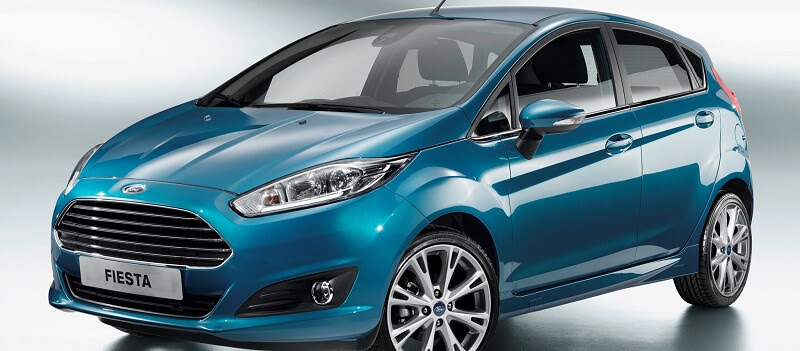
Malaysians cling to the edge of their seats as new petrol prices are announced at the beginning of every month, ever since the Government scrapped petrol subsidies and implemented a managed float system in late 2014.
The managed float system, which replaces the previous Automatic Pricing Mechanism (APM), is based on the monthly average world price of crude oil, and has seen local fuel prices fluctuating from month-to-month.
In February 2017, Malaysian drivers are paying RM2.30 for every litre of RON95, and RM2.60 per litre for RON97 petrol – that’s 21% and 15.6% more than what we were paying for in December 2016.
| Type of Petrol/Month | RON95 | RON97 |
|---|---|---|
| Sep 2016 | RM1.70/litre | RM2.05/litre |
| Dec 2016 | RM1.90/litre | RM2.25/litre |
| Feb 2017 | RM2.30/litre | RM2.60/litre |
With volatile fuel prices, a weak Ringgit and economic uncertainties, Malaysians are becoming increasingly aware of the impact that petrol prices will make on their household budgets. Drivers are now more educated than ever in terms of fuel efficiency.
That being said, there are still a number of popular petrol-saving myths out there that may not actually be true. What are some common fuel-saving tips that are and aren’t actually true? Read on to find out.
Myth #1: With smaller car, comes greater fuel economy
Drivers are often advised that smaller cars have greater fuel economy than those with larger engines, making them cheaper and more environmentally friendly to run.
But those looking to boost savings at the petrol pump could be making a mistake if they swap their four-wheeler for a smaller car, according to research that suggests that smaller vehicles have worse fuel economy than larger vehicles.
Emissions Analytics, a data company that measured car’s fuel consumption and emissions, explained that the reason for this was because vehicles with smaller engines generally have to work harder to accelerate, thus leading to greater fuel consumption.
As part of their research, Emissions Analytics tested more than 500 cars using real-world driving conditions and found that engines under one litre had a return of just 38.6mpg (miles per gallon). Meanwhile, one to two-litre engines, and two to three-litre engines yielded 46.7mpg and 45mpg respectively.
They also found that vehicles with an engine of one litre or below showed the greatest variance between manufacturer’s claims and actual performance. They achieved 36% less from its advertised 60.4mpg.
Small engines tended to perform well and received a high mpg results in lab tests. However, when they are taken out on the road and driven by real drivers, every rev suddenly burns through the fuel.
Meanwhile, vehicles with an engine size of between one and two litres performed at 21% less in fuel economy. Engine sizes of between two and three litres performed at 15% less.
Myth #2: Manual cars are more fuel efficient
It is commonly believed that manual transmissions can improve acceleration and help improve fuel mileage. The reason for this is because manual transmission engines tend to be less complex, weigh less (weight savings = fuel savings), and have more gears than automatics (which lets you optimise on fuel savings). The end result is you will likely end up getting more mileage out of the petrol pump with a manual than you would with an automatic.
Some sources claim that manual transmissions save drivers between 5% and 15% on their fuel costs. Findings from ConsumerReports.org support these claims – they ran both manual and automatic transmissions through their fuel-economy and acceleration tests and found that manual transmissions generally delivered up to 2 to 5mpg more than their automatic counterparts.
However, manuals may no longer be the primary rulers of fuel economy as automatic transmission technology continues to make advancements. For instance, automatic transmissions now have more gears, which cuts down on wasted fuels.
New classes of automatics also combine the best features of manuals and automatics, which results in a potential 7% fuel-efficiency improvement, according to FuelEconomy.gov.
However, those who intend to purchase a manual model might have trouble finding one nowadays. In 2013, only 6.5% of cars in the United States were still sold with manual transmissions. While there are no official figures for Malaysia, manual cars have clearly been falling out of favour for many drivers due to increasingly challenging traffic conditions (such as heavy and incessant congestion, especially in the Klang Valley), which do not favour cars with a manual gearbox.
Due to decreasing demand, choices of manual transmission models in today’s car market are quite limited. Another aspect to consider is that because auto transmissions are now the norm, manual cars could be harder to sell later on.
Myth #3: Premium fuel will boost your mileage
Here’s another myth that simply refuses to die – while it may seem like premium fuel equates to better fuel economy, you are unlikely to see even the tiniest jump in your mileage by using premium fuel in a vehicle that’s optimised for regular fuel.
In fact, a dyno test we did in February revealed that RON95 actually gives you about 9.4% more mileage than RON97.
Filling up your tank with premium fuel if your vehicle does not require it is not just unnecessary, it could be an enormous waste of money. Today, RON97 costs you 40 sen more than RON95 for every litre. This could mean an extra RM14 to RM20 per pump, and up to an additional RM56 to RM80 in a month!
Fortunately, most cars in Malaysia are built to run on RON95 petrol anyway. New development in engine technology has also allowed for some high compression modern engines to run on RON95.
So unless it is recommended by your car’s manufacturer, using a higher-octane petrol will have no effect on car performance or fuel economy, whatsoever.
Myth #4: Fuel economy decreases as a vehicle ages
Old isn’t always gold, and especially not when it comes to the age of your vehicle. However, research suggests that fuel economy can be sustained through proper vehicle maintenance.
Tests conducted by the US Department of Energy and the Environment Protection Agency (EPA) suggest that fuel efficiency actually improves over the first several years of ownership within the break-in period, or about the first 5,000 miles, according to FuelEconomy.gov.
Older cars that are 10 or even 15 years old will only see a minimal decrease in fuel economy if properly maintained, the site reported.
This means you should replace parts like spark plugs before problems occur. Fixing serious problems such as a faulty oxygen sensor may even improve your mileage by as much as 40% and keep your engine running at peak efficiency, FuelEconomy said.
Ultimately, the amount of mileage you get from your tank depends more on traffic conditions and the way you handle your car. Taking a congested route will cost you more fuel than a smooth-sailing one of the same distance (not like many of us have a choice).
Reducing your speed and accelerating with moderation, turning the air-conditioning off, removing unnecessary weight (like the junk in your trunk), and driving with the windows (or sunroof) closed are also proven ways that can help you save fuel.
Planning on getting a new car? Check out our car loan calculator to get started!













